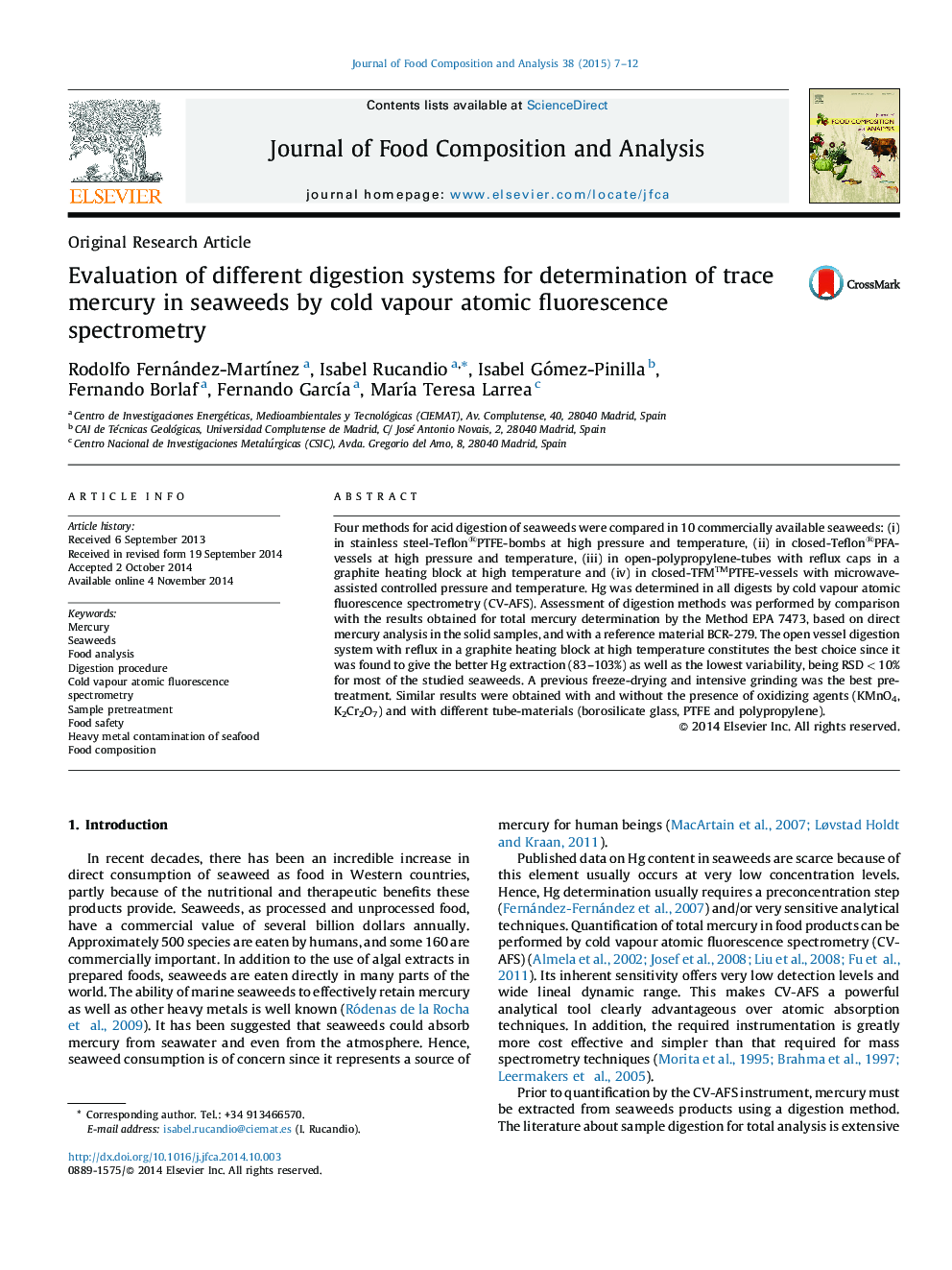| Article ID | Journal | Published Year | Pages | File Type |
|---|---|---|---|---|
| 1218155 | Journal of Food Composition and Analysis | 2015 | 6 Pages |
•Four wet digestion methods were compared to determine total Hg in seaweeds.•Reflux digestion in heating block achieved the highest Hg recoveries and precision.•It is an attractive alternative for its simplicity and high cost-efficiency.•Fibrous seaweed needs a pre-treatment based on freeze-drying followed by grinding.
Four methods for acid digestion of seaweeds were compared in 10 commercially available seaweeds: (i) in stainless steel-Teflon®PTFE-bombs at high pressure and temperature, (ii) in closed-Teflon®PFA-vessels at high pressure and temperature, (iii) in open-polypropylene-tubes with reflux caps in a graphite heating block at high temperature and (iv) in closed-TFM™PTFE-vessels with microwave-assisted controlled pressure and temperature. Hg was determined in all digests by cold vapour atomic fluorescence spectrometry (CV-AFS). Assessment of digestion methods was performed by comparison with the results obtained for total mercury determination by the Method EPA 7473, based on direct mercury analysis in the solid samples, and with a reference material BCR-279. The open vessel digestion system with reflux in a graphite heating block at high temperature constitutes the best choice since it was found to give the better Hg extraction (83–103%) as well as the lowest variability, being RSD < 10% for most of the studied seaweeds. A previous freeze-drying and intensive grinding was the best pre-treatment. Similar results were obtained with and without the presence of oxidizing agents (KMnO4, K2Cr2O7) and with different tube-materials (borosilicate glass, PTFE and polypropylene).
